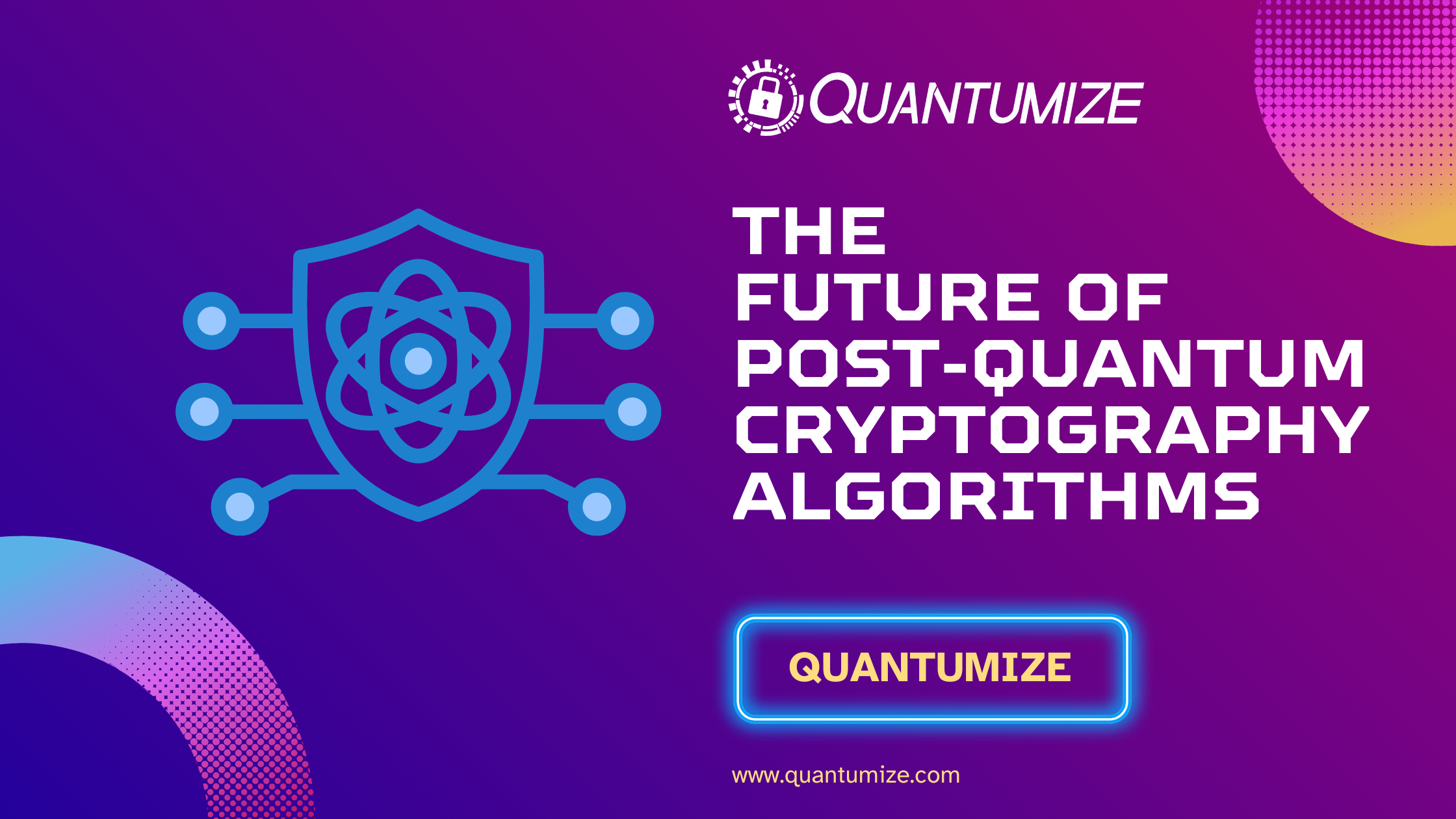New Algorithmic Standards Drive Post-Quantum Cryptography Market Growth

Table of Contents
The Threat of Quantum Computing and the Need for PQC
Quantum computers, leveraging the principles of quantum mechanics, operate on a fundamentally different principle than classical computers. This allows them to solve certain complex problems exponentially faster, rendering many widely-used encryption algorithms obsolete. Algorithms like RSA and Elliptic Curve Cryptography (ECC), which underpin much of our online security, are particularly vulnerable.
The urgency for transitioning to quantum-resistant cryptography is paramount. Failure to do so could result in catastrophic data breaches, exposing sensitive personal information, financial transactions, and national security secrets. The potential consequences are far-reaching and devastating.
- Vulnerable Encryption Methods: RSA, ECC, DSA, Diffie-Hellman.
- Potential Consequences of Data Breaches: Identity theft, financial losses, intellectual property theft, national security compromise.
- Government and Industry Initiatives: NIST's post-quantum cryptography standardization project, EU's cybersecurity initiatives, industry consortia focusing on PQC implementation.
Emerging Algorithmic Standards for Post-Quantum Cryptography
The standardization of post-quantum cryptography is crucial for ensuring interoperability and widespread adoption. The National Institute of Standards and Technology (NIST) has been leading the charge, conducting a rigorous evaluation process to select quantum-resistant algorithms. Other organizations, both public and private, are also contributing to this critical effort.
Several types of PQC algorithms are emerging as strong candidates, each with its own strengths and weaknesses:
- Lattice-based cryptography: Offers strong security and relatively efficient implementations.
- Code-based cryptography: Based on the hardness of decoding random linear codes.
- Multivariate cryptography: Relies on the difficulty of solving systems of multivariate polynomial equations.
- Hash-based cryptography: Offers strong security but can be less efficient than other approaches.
NIST's standardization process has resulted in the selection of several promising algorithms, including:
- CRYSTALS-Kyber (key encapsulation mechanism): Selected for its efficiency and security.
- CRYSTALS-Dilithium (digital signature algorithm): Chosen for its strong security properties.
- FALCON (digital signature algorithm): Offers a good balance between security and efficiency.
- SPHINCS+ (digital signature algorithm): A hash-based algorithm providing strong security guarantees.
Market Growth Driven by Algorithmic Standardization
The market for post-quantum cryptography is experiencing significant growth, driven primarily by the increasing awareness of the quantum threat and the standardization efforts by NIST and other organizations. Government regulations mandating the adoption of quantum-resistant solutions are further accelerating market expansion. Technological advancements are also contributing to the development of more efficient and practical PQC implementations.
- Market Size Estimations: Market research firms project substantial growth in the PQC market over the next decade. (Specific figures from reputable sources should be inserted here).
- Growth Projections: Significant growth is expected across all market segments, including hardware, software, and services.
- Key Players: A list of leading companies involved in the development and deployment of PQC solutions should be added here.
Investment in Post-Quantum Cryptography Research and Development
Significant investments are being made in research and development of PQC technologies by both public and private sectors. Governments worldwide recognize the importance of securing their infrastructure against the quantum threat and are providing substantial funding for research initiatives. Research institutions and universities are also playing a crucial role in driving innovation.
- Examples of Major Investments: (Include examples of government funding and private sector investments).
- Impact of Government Grants and Funding Initiatives: These initiatives are fostering innovation and accelerating the development of practical PQC solutions.
- Collaboration between Academia and Industry: Partnerships between research institutions and companies are vital for translating research breakthroughs into commercially viable products.
Challenges and Opportunities in the Post-Quantum Cryptography Market
Despite the significant progress, challenges remain in the widespread adoption of PQC. The complexity of implementing these new algorithms, concerns about interoperability, and the cost of transitioning to new systems are all factors that need to be addressed.
However, significant opportunities exist for innovation and market expansion. The development of more efficient algorithms, user-friendly implementation tools, and the emergence of new applications across various sectors will drive further growth.
- Technical Hurdles: Complexity of implementation, performance overhead, potential compatibility issues with existing systems.
- Potential Solutions: Development of optimized implementations, streamlined migration strategies, and improved tools for integration.
- Emerging Applications: Finance (secure transactions), healthcare (patient data protection), IoT (secure communication), and government (national security).
Conclusion: Securing the Future with Post-Quantum Cryptography
The need for Post-Quantum Cryptography is undeniable. The emergence of new algorithmic standards is driving significant market growth, fueled by increasing awareness of the quantum threat and substantial investments in research and development. While challenges remain, the opportunities for innovation and market expansion are substantial. By proactively investing in and adopting PQC solutions, we can secure our data against the impending quantum threat and safeguard our digital future. Invest in your future cybersecurity with post-quantum cryptography today!

Featured Posts
-
 Landman Season 2 Bts First Look At Ali Larters Return During Filming
May 13, 2025
Landman Season 2 Bts First Look At Ali Larters Return During Filming
May 13, 2025 -
 Nba Tankathon A Miami Heat Fans Off Season Obsession
May 13, 2025
Nba Tankathon A Miami Heat Fans Off Season Obsession
May 13, 2025 -
 Chris Evans On Working With Scarlett Johansson Insights Into Their Partnership
May 13, 2025
Chris Evans On Working With Scarlett Johansson Insights Into Their Partnership
May 13, 2025 -
 Elderly Hiker Missing In Peninsula Hills Search And Rescue Efforts
May 13, 2025
Elderly Hiker Missing In Peninsula Hills Search And Rescue Efforts
May 13, 2025 -
 50 Cent And Tory Lanez On Megan Thee Stallions Guilty Verdict Their Responses
May 13, 2025
50 Cent And Tory Lanez On Megan Thee Stallions Guilty Verdict Their Responses
May 13, 2025
